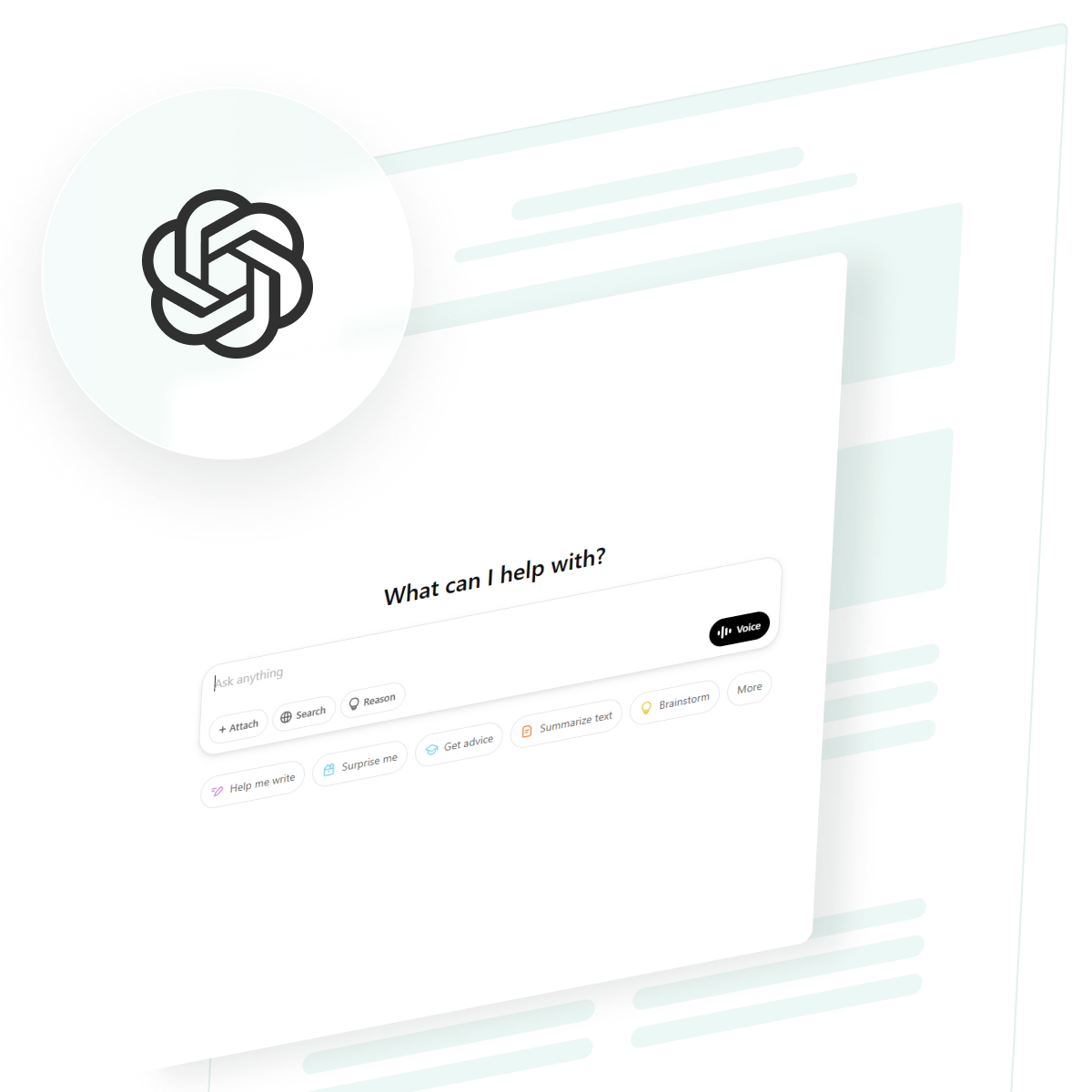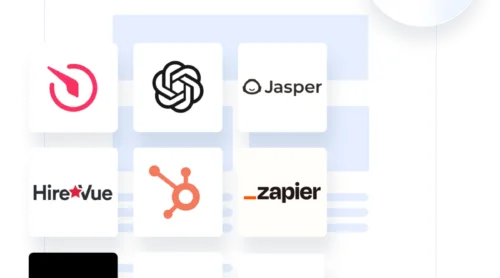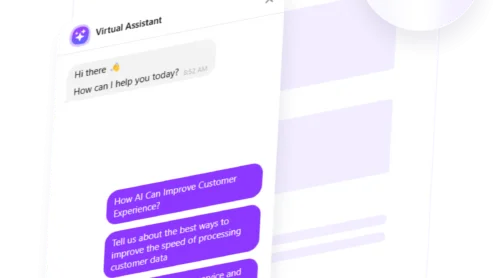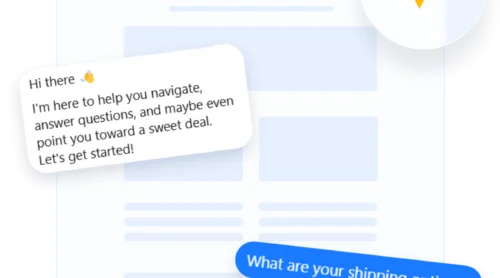Customer support is at the heart of every successful business, yet it remains one of the biggest operational challenges. Long wait times, inconsistent responses, and the need for round-the-clock availability put immense pressure on support teams.
In an effort to solve these issues, businesses are increasingly turning to AI-powered solutions like ChatGPT — a powerful language model capable of understanding, processing, and responding to customer inquiries in real time. Its ability to automate repetitive tasks, assist in multiple languages, and analyze customer sentiment has positioned it as a game-changer in the customer support industry.
But where does ChatGPT truly add value, and how can businesses implement it effectively? This article explores the key applications, benefits, and challenges of using this tool in customer service.
Applications of ChatGPT in Customer Support
Businesses across industries are increasingly integrating ChatGPT for customer support to improve efficiency, reduce operational costs, and enhance customer satisfaction. ChatGPT helps companies provide faster, more personalized, and round-the-clock support.
Here’s a closer look at its key applications in customer service:
🚀 Automated Responses
One of the most significant advantages of ChatGPT in customer service is its ability to handle routine inquiries efficiently. Clients frequently ask about order statuses, refund policies, troubleshooting steps, and account setup procedures — questions that don’t always require human intervention. ChatGPT can process these inquiries instantly, providing clear and consistent responses.
By automating these interactions, businesses can:
- Reduce response times and improve customer satisfaction.
- Free up human agents to focus on more complex issues.
- Maintain consistency in customer communications.
This not only enhances efficiency but also ensures that customers receive immediate assistance without long wait times.
🌐 Multilingual Support
In a globalized market, language barriers can be a major challenge for customer service teams. ChatGPT helps bridge this gap by understanding and responding in multiple languages. Unlike traditional translation tools, ChatGPT can generate more natural, contextually accurate translations, making conversations smoother and more effective.
For businesses, this means:
- Expanding support to a global customer base without hiring multilingual staff.
- Reducing miscommunication and improving clarity in customer interactions.
- Offering a more inclusive and accessible customer service experience.
This capability allows companies to engage with customers worldwide while maintaining efficiency and accuracy.
📊 Feedback Analysis
Understanding customer feedback is crucial for business growth, but manually sorting and analyzing feedback can be time-consuming. ChatGPT simplifies this process by automatically generating surveys, categorizing feedback, and performing sentiment analysis.
With ChatGPT customer service feedback analysis, businesses can:
- Identify common pain points and areas for improvement.
- Monitor customer sentiment and detect shifts in satisfaction levels.
- Gain actionable insights to refine products, services, and support strategies.
By automating feedback analysis, businesses can make data-driven decisions faster and enhance the overall customer experience.
🎯 Personalized Recommendations
Customers expect more than just answers — they want tailored solutions. By analyzing customer preferences, past interactions, and purchase history, ChatGPT can generate personalized product or service recommendations.
This level of customization helps businesses:
- Increase upselling and cross-selling opportunities.
- Improve customer engagement and satisfaction by offering relevant suggestions.
- Strengthen customer loyalty through more personalized interactions.
By making recommendations that align with individual customer needs, businesses can create more meaningful and effective engagement strategies.
⏰ 24/7 Availability and Scalability
Customers don’t just need support during business hours — they expect assistance at any time of the day or night. Using ChatGPT for customer service ensures round-the-clock availability, handling inquiries even during weekends, holidays, and peak traffic hours.
The benefits of 24/7 support include:
- Reduced wait times with immediate responses, improving customer satisfaction.
- The ability to handle increased volumes of inquiries without overburdening human agents.
- A scalable support system that adapts to business growth and fluctuating demand.
By maintaining constant availability, businesses can provide a seamless customer support experience, ensuring that no query goes unanswered, no matter when or where it arises.
ChatGPT-Powered Customer Service Chatbot
For businesses looking to streamline support without overhauling their existing infrastructure, a ChatGPT customer service chatbot provides a practical solution. Unlike traditional chatbots that follow rigid scripts, ChatGPT-powered bots can understand natural language, adapt to different contexts, and provide more conversational, human-like responses.
For those who want a quick and hassle-free way to integrate AI into their customer support system, tools like the Elfsight AI Chatbot widget offer an easy-to-use solution.
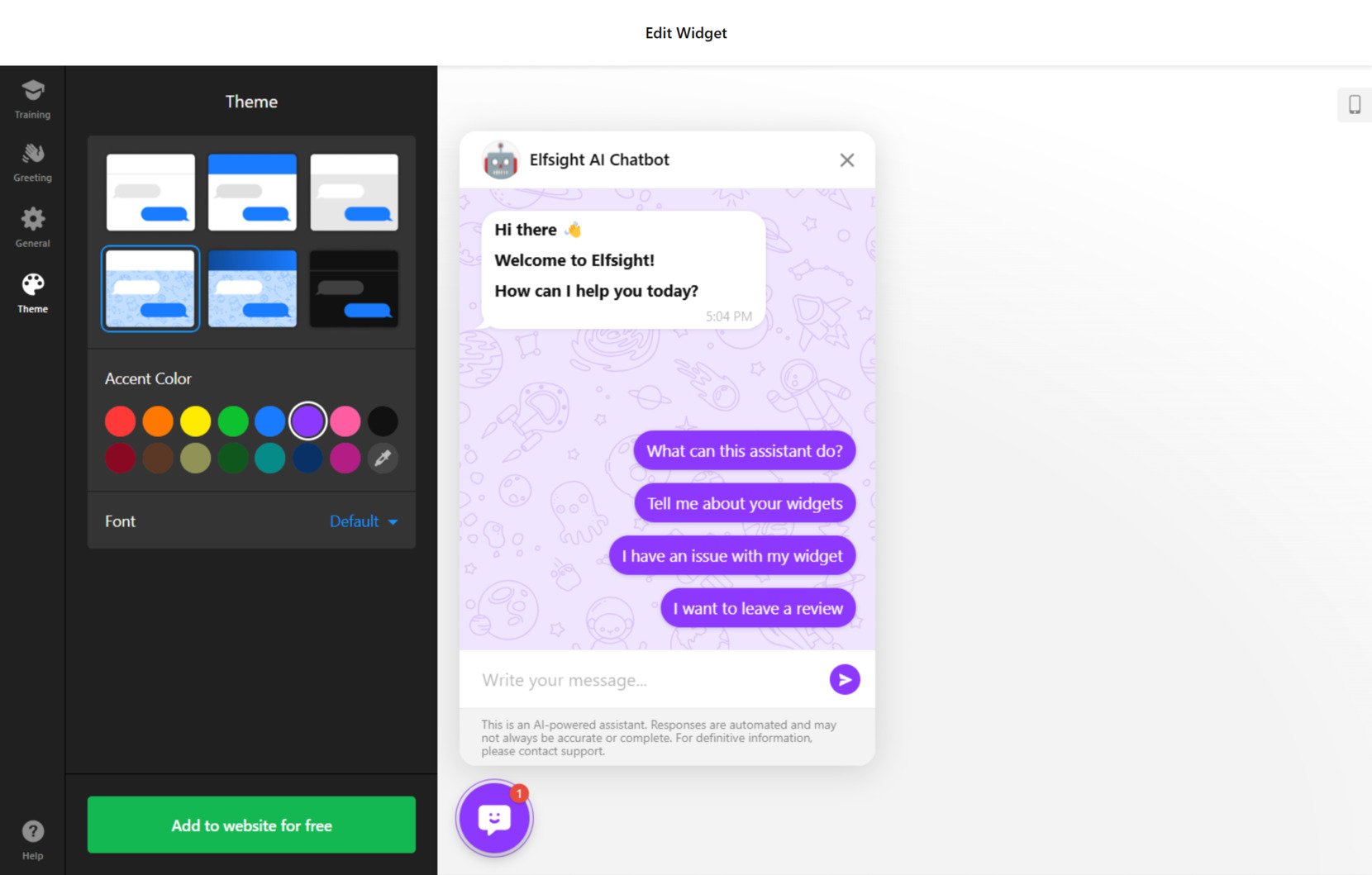
With minimal setup, businesses can deploy a customizable ChatGPT-powered chatbot on their website, ensuring 24/7 automated assistance without requiring advanced technical knowledge. Here’s how to get started with the tool:
- Open the widget editor and input your website URL or business information to start setting up your assistant.
- Adjust the bot’s responses, greeting message, and any extra instructions.
- Personalize the widget’s look, settings, and theme to match your site’s design.
- Once ready, publish the chatbot, copy the embed code, and paste it into your website. You’re all set!
By leveraging the AI chatbot effectively, companies can create a scalable, always-available customer service experience that enhances efficiency while keeping customer interactions natural and engaging. Whether it’s answering FAQs, assisting with troubleshooting, or managing multilingual conversations, a smart AI assistant can significantly reduce wait times and free up human agents for more complex issues.
Create your AI chatbot using the simple editor and boost customer interaction!
Best Practices for Using ChatGPT in Customer Support
Integrating ChatGPT for customer service isn’t just about turning on an AI chatbot — it’s about ensuring it aligns with business goals, enhances the customer experience, and operates seamlessly alongside human support teams. To achieve this, companies must follow a structured approach.
Step 1: Customize ChatGPT to Fit Your Business Needs
A one-size-fits-all AI solution won’t deliver the best results. Businesses must fine-tune ChatGPT to match their unique customer support requirements.
- Train the AI with company-specific knowledge. Upload FAQs, previous customer interactions, and product documentation to improve accuracy.
- Define tone and language preferences. Ensure responses reflect the brand’s voice, whether it’s formal, friendly, or professional.
- Set role-based functionalities. ChatGPT can be programmed for different support levels, such as handling initial inquiries before escalating complex issues.
Step 2: Establish a Human-AI Collaboration Model
AI enhances efficiency, but human expertise remains essential for handling complex, sensitive, or highly personalized cases. Striking the right balance between automation and human intervention is key.
- Route advanced issues to human agents. Set up escalation triggers so ChatGPT can recognize when a query requires human input.
- Regularly review AI-generated responses. Customer service teams should monitor ChatGPT’s interactions to refine accuracy and prevent miscommunication.
- Ensure AI transparency. Customers should know when they are interacting with AI versus a human agent to set the right expectations.
Step 3: Continuously Monitor, Learn, and Improve
Successful AI implementation is an ongoing process. Regular updates and refinements help maintain ChatGPT’s efficiency over time.
- Analyze customer interactions. Use analytics to assess response quality, common issues, and areas for improvement.
- Incorporate real-time feedback. Allow customers and agents to provide input on AI-generated responses to fine-tune accuracy.
- Update knowledge regularly. As products, policies, and customer needs evolve, ChatGPT should be retrained to stay relevant.
Benefits of Integrating ChatGPT
Using ChatGPT in customer support offers businesses a host of valuable benefits that can help improve service quality, reduce operational costs, and create a better experience for customers and agents alike. Let’s break down the main advantages.
One of the most significant benefits of ChatGPT in customer service is its ability to automate responses, which drastically improves efficiency. It can handle routine inquiries instantly, allowing businesses to reduce response times and enhance service speed.
| Task | Before ChatGPT | After ChatGPT |
|---|---|---|
| Response to FAQs | Manual responses from agents | Automated instant responses |
| Troubleshooting common issues | Human intervention for basic issues | AI-driven step-by-step solutions |
| Repetitive tasks (e.g., account setup) | Agents spend time on each task | AI handles multiple tasks simultaneously |
By automating these common tasks, businesses can streamline operations and focus on providing superior service for more complex cases.
By automating low-level customer service inquiries, ChatGPT allows human agents to focus on higher-priority or complex issues that require personal attention. This leads to better utilization of human resources and more effective service delivery.
| Before ChatGPT | With ChatGPT |
|---|---|
| Agents handle all inquiries | ChatGPT handles basic inquiries |
| Human agents deal with every case | Agents focus on complex or sensitive cases |
| High volume = overwhelmed agents | AI handles peak traffic periods |
This means businesses can keep customer support operations lean and cost-effective while ensuring human agents are only required for interactions that necessitate empathy, judgment, or expertise.
Consistency in customer service is critical for maintaining brand reputation and trust. ChatGPT ensures that every response follows the same tone, style, and company guidelines, eliminating inconsistencies often seen with human agents.
| Without ChatGPT | With ChatGPT |
|---|---|
| Varying response styles and tones | Standardized, on-brand responses |
| Inconsistent information sharing | Accurate, uniform answers across all queries |
| Possible errors and confusion | AI-driven clarity and precision |
With AI help, businesses can ensure that customers receive reliable, uniform, and professional responses across all channels. When used strategically, ChatGPT can enhance the overall customer experience, increase operational efficiency, and strengthen brand identity.
Challenges and Limitations
While integrating ChatGPT for customer service offers several advantages, there are also challenges and limitations that businesses need to be aware of. Though ChatGPT can handle a wide range of customer inquiries efficiently, there are areas where its capabilities may fall short. Here are the key challenges businesses should consider:
1. Handling Complex Queries
ChatGPT excels at handling routine tasks, like answering frequently asked questions or providing basic troubleshooting steps. However, when it comes to complex issues — such as detailed product inquiries, advanced technical support, or emotionally sensitive situations — AI might struggle to provide the depth of response that a human agent can.
This is why a hybrid approach, where ChatGPT manages basic inquiries and human agents step in for more complex cases, is crucial for maintaining high customer satisfaction levels.
2. Maintaining Context in Prolonged Interactions
Another limitation of ChatGPT is its difficulty in maintaining context over extended conversations. In a fast-paced, real-time environment, customers often need to provide additional information, ask follow-up questions, or revisit previous issues. While ChatGPT can handle short, isolated queries effectively, it can struggle when the conversation requires ongoing context or when a customer returns with a new query related to a previous issue.
To address this challenge, businesses need to ensure there are mechanisms in place, such as conversation memory or integration with support platforms, to track ongoing issues and provide context to the AI. This would help ensure that ChatGPT can engage in more coherent, multi-turn conversations.
3. Continuous Training and Updating
As customer needs and business environments evolve, ChatGPT requires continuous training and updates to stay relevant. Over time, businesses may introduce new products, services, or policies, and ChatGPT must be trained to reflect these changes. Without proper updates, the AI model may deliver outdated or incorrect information, which could lead to dissatisfaction and potential errors in customer service.
If businesses fail to keep ChatGPT updated with the latest information, they risk providing subpar customer service, which can lead to confusion or frustration for customers who rely on the AI for accurate assistance.
Addressing the Limitations
While these limitations can present challenges, they are not insurmountable. Businesses can take several steps to mitigate these issues:
- Hybrid support model. Ensure that routine inquiries are handled by ChatGPT, while more complex or emotionally sensitive cases are escalated to human agents who can provide the necessary attention and empathy.
- Enhanced context management. Integrating ChatGPT with advanced features like conversation memory or using context management tools can help the AI maintain the flow of longer conversations, making interactions feel more coherent and personalized.
- Continuous AI training. Regularly update and retrain ChatGPT with the latest product information, customer feedback, and company policies to ensure it stays current and accurate. This is essential for maintaining high-quality customer service and avoiding outdated or incorrect responses.
By being mindful of these challenges and actively working to address them, businesses can maximize the effectiveness of ChatGPT for customer support while delivering a smooth and efficient customer service experience.
FAQ
What other AI tools can I use to improve customer service?
Is it hard to use the ChatGPT API?
Can I use ChatGPT to build a chatbot?
Can I create a chatbot if I don't have coding skills?
What platforms can I add my chatbot to?
Conclusion
In this article, we’ve explored how ChatGPT can enhance customer support through automation, efficiency, and scalability. By handling routine inquiries, providing multilingual support, and offering personalized recommendations, ChatGPT streamlines operations and improves customer experiences. However, it’s essential to acknowledge the limitations, such as handling complex queries and maintaining context, which can be addressed with ongoing training and a hybrid approach involving human agents.
Looking ahead, the future of ChatGPT in customer support is promising, with continuous advancements in AI improving its capabilities. While it may not replace human agents, ChatGPT is a valuable tool that, when used strategically, can optimize resources, reduce response times, and ultimately contribute to a more effective and scalable customer service model.


